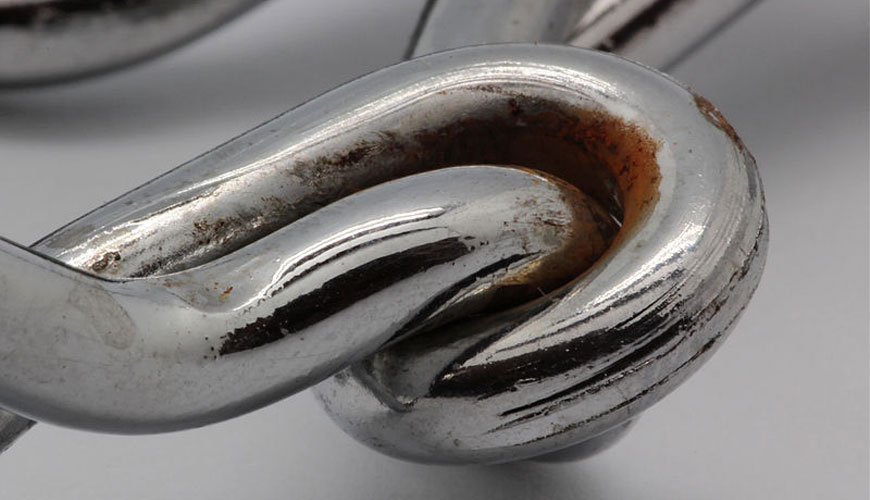

EUROLAB laboratory provides testing and compliance services within the scope of EN 62321-7-1 standard. This part of the EN 62321 standard describes a boiling water extraction procedure for the qualitative determination of the presence of hexavalent chromium (Cr(VI)) in colorless and colored corrosion protection coatings on metallic samples.

In this procedure, a sample is considered negative for Cr(VI) when Cr(VI) is detected below 0,10 g/cm² LOQ (limit of quantification). Because Cr(VI) cannot be uniformly dispersed in the coating even within the same sample lot, a "gray zone" between 0,10 g/cm² and 0,13 g/cm² is designated as "uncertain" to reduce inconsistent results. In this case, when Cr(VI) above 0,13 g/cm² is detected, additional testing may be necessary to confirm its presence.
The widespread use of electrotechnical products has drawn more attention to their impact on the environment. In many countries of the world this has resulted in the adoption of regulations affecting waste, materials and energy use of electrotechnical products.
The use of certain substances (eg lead (Pb), cadmium (Cd) and polybrominated diphenyl ethers (PBDEs)) in electrotechnical products is a concern in current and proposed regional legislation.
The purpose of the EN 62321 series is therefore to provide test methods that will allow the electrotechnical industry to determine the levels of certain substances in electrotechnical products on a consistent global basis.
Persons using this International Standard should be familiar with normal laboratory practice. This standard does not purport to address all safety issues, if any, associated with its use. It is the user's responsibility to establish appropriate safety and health practices and to ensure compliance with any national regulatory requirements.
All reusable labware (glass, quartz, polyethylene, polytetrafluoroethylene (PTFE), etc.), including sample cups, should be soaked overnight in lab-grade detergent and water, rinsed with water, and soaked in HNO4 for 3 hours or more (volume fraction 20%) or a mixture of dilute acids (HNO3:HCl:H2O = 1:2:9 by volume) followed by a water rinse (4.2 f). Alternative cleaning procedures are permitted provided that adequate cleaning can be demonstrated through analysis of method blanks.
Samples should not be stored in environments where oxidation of Cr(III) to Cr(VI) may occur. Samples will be stored under ambient conditions from the time they arrive until the start of testing. Ambient conditions are defined as 45% RH to 75% RH (relative humidity) and temperature between 15 °C and 35 °C.
In some cases, disassembly or mechanical separation may be required to take samples for testing; IEC 62321-2 should be consulted for sample preparation.
EUROLAB, with its more than 25 years of experience, state-of-the-art accredited laboratories and expert team, helps you get precise and fast results. Do not hesitate to contact our laboratory for your testing and certification requests.
To get an appointment, to get more detailed information or to request an evaluation, you can ask us to fill in our form and reach you.